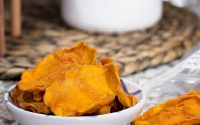Backyard Orchard – February 2015
Planting Bare Root Trees – Your Backyard Orchard
The bounty of the harvest all begins with the preparation and planting of our orchards. Although our Bella Viva orchards are filled with hundreds of trees, consisting of many different varieties, it doesn’t take a lot of space to create your own “Backyard Orchard.” The best time of the year to plant your bare root fruit trees is during the winter months when they are dormant; before their buds swell and the rainy season saturates the ground.
First, you will need to find an area in your yard that receives six or more hours of full sun per day during the growing season; keeping in mind many bare root fruits, such as apples, apricots, nectarines, peaches and plums will need room to grow. However, for more confined areas, there are dwarf varieties and specially trained versions to fit smaller growing spaces. The soil in this area should be deep and well drained.
The next step is to check the USDA Plant Hardiness Zone Map to find a fruit variety that will thrive in your location based on your average winter temperature. Most local nurseries will carry varieties appropriate for their surrounding climate along with any supplies or materials you may need for the planting process. Picking a tree less susceptible to pest issues will ensure your Backyard Orchard is off to a great start. From our experience at Bella Viva, we have found that Stone Fruits can have issues with peach twig borer and oriental fruit moth; two pests that can cause worms in the fruit. On the other hand, citrus, figs, persimmons, plums and berries tend to be less effected by bugs and could prove to be easier to maintain for beginners. We have also noticed that early maturing fruit, May – June, will tend to have fewer issues than later maturing fruit, August – September. However, we also have found that later maturing peaches (August) are typically larger and more flavorful!
Once you have selected your tree and are ready to plant, you will need to dig a hole twice as wide as the root ball and nearly twice as deep. Mix the excavated soil with any amended soil and fill the bottom of the hole with enough dirt to support the shape of the root system. Place the tree in the hole, with the bud union facing northeast to avoid sunburn, typically at least 2 – 4 inches above the soil line, then back-fill the hole with dirt. Lightly compact the dirt eliminating any voids or holes in the soil around the root ball. When properly planted, the soil line on the trunk of the tree should be 1 to 2 inches above the level of the surrounding ground.
Create a doughnut shaped basin for watering the tree, making sure that water drains away from the trunk. The basin should be slightly wider than the outside perimeter of the hole. Although the soil should be moist, too much water can eliminate air spaces within the root system, which can kill trees. Irrigation management is very important and will change with the seasons. Fruit trees will typically require more water during the growing season than they will in the winter months. You may also need to remove the “moat” around the tree during the rainy months to avoid over saturation.
A little on going maintenance will ensure a healthy fruit tree and a bountiful harvest. The ground within a few feet of the trunk should be kept clean and clear of all debris including grass, weeds, loose bark, leaves or anything else than may compete for water or provide hiding areas for pests and bugs. To protect the newly planted tree from sunburn, it is common practice to paint the trunk of the tree with a 1:1 mixture of white interior or latex paint and water. The paint should be applied up the trunk from 2 inches beneath the soil line. The tree may need to be re-painted for the first couple seasons until the canopy of the tree is large enough to shade the trunk. For more information on pruning practices, irrigation, and pest protection, please see the resources below.
- The Home Orchard – University of California
- Introduction to Home Fruit Growing
- Planting Fruit Trees
- Stone Fruit Varieties for Milder Climates
- Dave Wilson Nursery
- Burchell Nursery
- Sperling Nursery
- Western Fruit Grower






